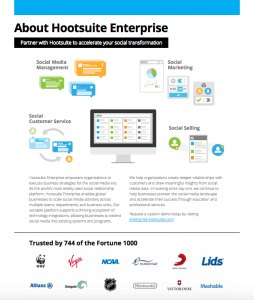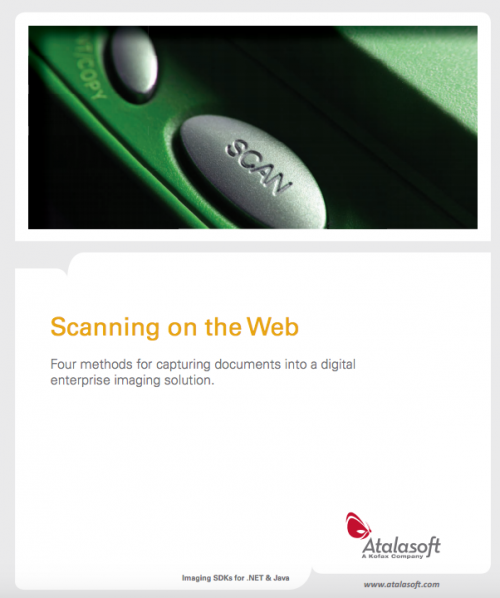Not every piece of content we produce resides at the top of the sales funnel spinning up awareness. If that were the case, our jobs as marketers would be much easier.
When digital marketers roll up their sleeves and generate leads, many have found that white papers provide a utility for which potential customers are willing to give up a name and email address. White papers are more substantial pieces of content that allow customers to solve an information problem that represents the solutions your company can offer.
Do marketers still use white papers?
A 2014 study conducted by Content Marketing Institute and MarketingProfs showed that 64% of marketers use white papers. Among those are marketers tasked with conveying more in-depth, complicated information to potential buyers. Those marketers recognize the impact that white papers can have on a consumer’s buying decision. When used effectively, white papers can serve as and anchor to a longer content marketing campaign. Here’s how:
White Paper Pros:
- Leads. While white papers do not need to be gated to generate leads, most marketers use them as such.
- White papers attract decision makers: White papers are the type of content that gets consumed by buyers. Those with a handle on a company’s budget, those who make strategic decisions for their organization are also likely to appreciate a fact-based, detailed report.
- White papers set you apart from the competition. Who would you rather buy from? A company that went through the trouble of producing a multiple-page report that walked you through a solution, or one that didn’t?
- Lead generation: White papers are seen by many consumers as “problem solvers.” Consumers are willing to share information because they are getting a solution in return.
- White papers get shared. If Consumer 1 downloads and prints a white paper in the office, he may just use it to solve his problem and be done. When Consumer 2 comes across the same problem and uses Consumer 1’s copy of the white paper, she may be in a better position to visit your company’s site and make a purchase.
- White paper content is recyclable. Repurposed content in the form of blog posts, infographics and more can be used to help drive traffic to your white paper landing page.
White Paper Cons:
- White papers need a lot of care after they are created. Just posting it to your site and sharing it once isn’t enough. You’ll need to continually drive traffic to the landing page in order to demonstrate return on investment.
- White papers can be perceived as dry and boring. Effective white papers are loaded with data, research and statistics.
- You need to speak your buyer’s language. For example, an engineer looking to buy electronic equipment will likely see right through a white paper written by an marketing rep may not have done the research. Long content like white papers can take up a lot of resources in research.
What Marketers are Saying:
“You can attract more leads by posting your white paper to a syndication service. These services will promote your white paper, and you usually pay for every lead they bring your way. Just be sure that your syndication service can get your white paper in front of your ideal customers and that you’re not paying for bad leads such as your competitors, students and consultants.”
— Rachel Foster, 7 Ways to Promote Your White Papers to Get More Downloads, Leads and Shares
“A truly great white paper is educational and even groundbreaking. It should have your prospects nodding in agreement as they read it. They should come away better informed and believing that you clearly grasp their problem and understand how to fix it.”
— Justin Pugsley, How to Use White Paper to Sell to Businesses
White Paper Examples:
By exchanging contact information for an opportunity to download content, buyers are expecting that content to be useful and beneficial to their situation. White paper content should answer questions or solve part of a problem that consumers are facing. In the following example, companies understand the pain points that buyers face and offer solutions through white paper content.
To attract clients struggling with running a social businesses, Hootsuite offers a white paper 8 Tips for Social Business. The 7-page white paper includes a closing page further describing the company as well as showcasing some of Hootsuite’s top clients.

Adobe, in an effort to reach business professionals searching for detailed information about document security, published the white paper Global Insights on Document Security.

The white paper is 15 pages and contains the type of research and data an IT professional will be looking for when making decisions on his company’s document and file security practices.
Atalasoft, a document imaging company partnered with the digital publisher Software Development Times to release the white paper Scanning on the Web.

The 7-page white paper details four separate options for web scanning and offers readers a 30-day trial of Atalasoft’s latest scanning solution.
White Paper Best Practices
Good white papers should be a part of any sales process in which purchase decisions are made across a longer sales cycle. In your effort to always being the best answer for your customers, consider these best practices when writing white papers.
- Answer specific questions. Know what your customers are searching for and craft your white paper with buyer insight and data-driven topics.
- Ask for just the right amount of data in return. What you ask for in a customer registration is up to you: It could be email address, name, phone number or mailing address. Beware that asking for more information than necessary will turn many people away.
- Integrate. White papers works best in concert with other paid, earned and owned tactics.
- Don’t push too hard for the sale. Present the information that you believe is required to help your customers solve the problem that brought them to your download page. Beyond that, any appearance of over-selling is probably a turn-off. Let your helpful content speak for itself.
- Be visual. Use graphs and charts that can easily represent data.
- Prove it. White papers are often formatted like more academic reports, with attribution of sources and footnotes if needed. Your customers want to know that the detailed information you are sharing is well-sourced.
- Repurpose. Make the most of the time you put into your white papers. Content developed for your white paper can be used in smaller blog posts or condensed into infographics. Think of your white paper as a campaign anchor and develop resources around it to drive traffic and optimize performance.
Have you been successful using white papers in your marketing mix? What are your tips and tricks?
For more content marketing best practices, see our full list of content marketing tactics with links to in-depth articles on each tactic just like this one.
Top image: Shutterstock



